

Table of Contents
ToggleIntroduction: Useful Kitchen Pantry
In the realm of kitchen organization, the pantry reigns supreme. A well-designed pantry can make your kitchen not only more functional but also visually appealing. It’s the heart of your kitchen, where ingredients are stored and culinary creativity takes shape. In this article, we’ll explore 10 different types of useful kitchen pantry, each tailored to specific needs and preferences at Mettas Lifestyle.
1. Walk-In Pantry

Spacious Storage: A walk-in kitchen pantry offers ample space for storing a wide variety of items, from dry goods to kitchen appliances.
Easy Access: With shelves and storage on all sides, it’s easy to find what you need at a glance.
Customization: You can customize the shelving and organization to suit your unique storage needs.
2. Pull-Out Pantry

Space-Saving: Ideal for small kitchens, a pull-out kitchen pantry is designed to fit into tight spaces, making the most of vertical storage.
Rolling Shelves: The shelves pull out like drawers, providing easy access to all items, even those at the back.
Concealed Design: When not in use, it tucks away neatly, keeping your kitchen looking sleek.
3. Butler’s Pantry

Entertainment Hub: A butler’s pantry is perfect for entertaining, with a focus on serving and storage for glassware, dishes, and bar essentials.
Connected Convenience: It often connects the kitchen to the dining or living area, making serving and cleanup a breeze.
Hidden Clutter: Provides a discreet place to store prep work and dishes during a dinner party.
4. Freestanding Pantry Cabinet
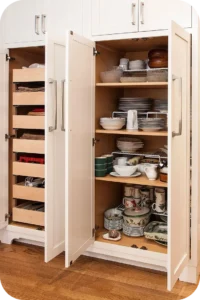
Mobility: You can move it around your kitchen pantry or even take it with you if you move houses.
Various Styles: Available in a range of styles, from rustic to modern, to match your kitchen decor.
Affordability: An economical choice compared to built-in options
5. Slide-Out Pantry Shelves

Narrow Space Solution: Perfect for that awkward, narrow space between your fridge and the wall.
Easy to Install: Can be added to existing cabinets, providing additional storage for canned goods and spices.
Accessible Design: The sliding mechanism ensures nothing gets lost at the back of the pantry.
6. Corner Pantry

Maximized Corner Space: Utilizes often underutilized corner spaces in your kitchen.
Deep Shelves: Provide substantial storage for larger kitchen items like appliances and pots.
Organized Nooks: Allows for organized, easy-to-reach sections within the pantry.
7. Pull-Down Pantry
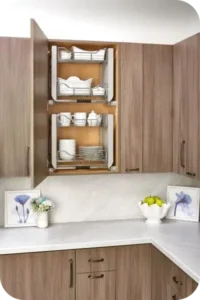
Accessible Height: Items are stored above eye level and easily pulled down for access.
Efficient Use of Space: It maximizes vertical space, making it great for small kitchens.
Clean Look: The pantry retracts neatly into the cabinet, maintaining a sleek appearance.
8. Wall-Mounted Pantry
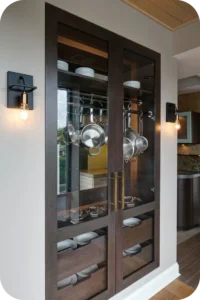
Vertical Storage: Utilizes wall space for open shelving, displaying ingredients and cookware.
Decorative Element: This can be an attractive design feature, adding character to your kitchen.
Convenient Access: Everything is within arm’s reach, making it easy to grab what you need
9. Built-In Pantry

Seamless Integration: A built-in kitchen pantry becomes an integral part of your kitchen design.
Streamlined Appearance: It creates a cohesive and uncluttered look.
Customization: You can design it to fit the specific layout and style of your kitchen.
10. Larder Cupboard

Retro Charm: A larder cupboard adds a touch of vintage charm to your kitchen.
Spacious Shelving: With numerous shelves and compartments, it can store a range of dry goods and kitchenware.
Aesthetic Appeal: It can be a statement piece, enhancing the visual appeal of your kitchen.
Conclusion
In the realm of kitchen organization, the pantry is the unsung hero that makes your culinary endeavors not only more efficient but also aesthetically pleasing. The right pantry can turn your kitchen into a well-organized space where ingredients are neatly stored and cooking becomes a joy. We’ve explored ten different types of useful kitchen pantry, each catering to specific needs and preferences, from spacious walk-in pantries to charming larder cupboards.
Selecting the ideal pantry for your kitchen depends on factors like available space, storage requirements, and design preferences. A well-chosen pantry doesn’t just enhance the functionality of your kitchen; it can also elevate the overall look and feel of your culinary space. Whether you opt for a built-in pantry that seamlessly integrates with your kitchen’s design or a freestanding cabinet that offers mobility, your choice should reflect your unique lifestyle and tastes.
No matter the type, a well-organized and efficiently designed kitchen pantry is bound to bring order and convenience to your daily cooking routine. With the right pantry in place, you’ll always have the ingredients and tools you need at your fingertips, transforming your kitchen into a hub of culinary creativity.
Related topics you must read: Choosing, Organizing, and Maintaining the Perfect Pantry Cabinet
FAQs
In a kitchen pantry, you should store non-perishable items like canned goods, dried grains, pasta, rice, spices, baking supplies, and kitchen utensils. It’s also a great place to keep small appliances and cookware that you don’t use daily.
To maintain an organized pantry, use clear containers or labeled bins for loose items, rotate stock to ensure freshness, and regularly check for expired products. Group similar items together, and consider using adjustable shelving for flexibility.
A walk-in pantry is typically a standalone storage space for food and kitchen supplies. In contrast, a butler’s pantry is a serving area that connects the kitchen to a dining or living area. It often includes storage for glassware, dishes, and bar essentials, making it ideal for entertaining.
Yes, you can convert a closet into a pantry by adding shelves, storage bins, and other pantry organization solutions. Make sure to plan the layout to maximize space and accessibility.
In a small pantry, consider using pull-out shelves or slide-out pantry shelves to maximize space utilization. Use clear containers for better visibility and stack items when possible. Don’t forget the back of the door – it’s an excellent spot for hanging storage.
The cost of installing a kitchen pantry varies widely based on factors such as pantry type, size, materials, and whether it’s custom-built or pre-fabricated. You can find small, standalone pantries for a few hundred dollars, while larger, custom-built walk-in pantries can cost several thousand.
Pantry design trends often include open shelving for a modern look, pull-out or slide-out pantry shelves for efficient storage, and built-in or concealed pantries for a sleek appearance. Choose a design that aligns with your kitchen style and your organizational needs.
To maintain the freshness of pantry items, store them in airtight containers to prevent exposure to moisture and pests. Rotate items, placing newer items at the back, and regularly check for expired products to ensure everything is fresh and safe to use.
Yes, a well-organized and aesthetically pleasing pantry can add value to your home. Prospective buyers often appreciate a kitchen with ample storage space and efficient organization, making it a selling point.
The need for a professional installation depends on the complexity of the pantry type and your DIY skills. Some pantries, like freestanding cabinets, can be assembled by homeowners. However, for built-in or custom-designed pantries, it’s often best to hire a professional to ensure proper installation and maximize space utilization.

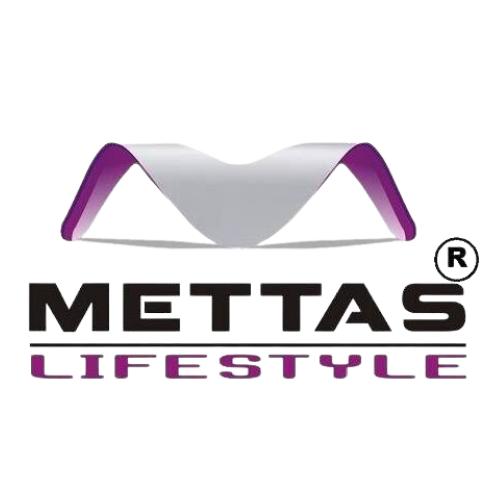

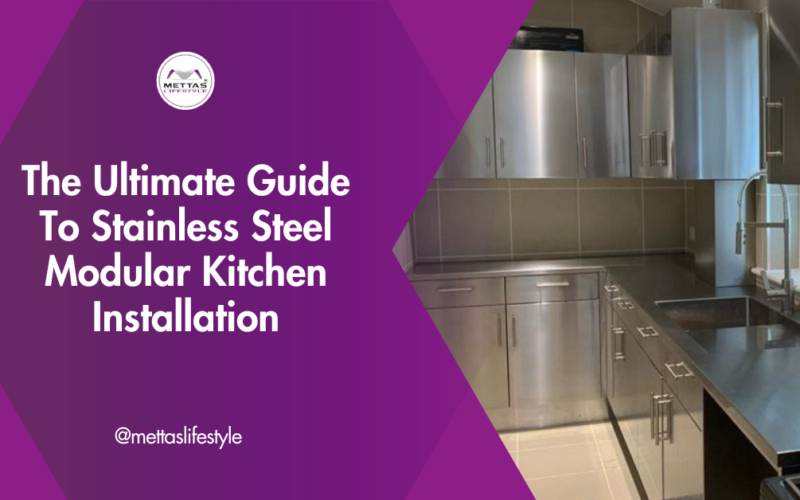

6 comments. Leave new
I am curious to find out what blog platform you
are using? I’m experiencing some small securitry problems with my latest website and I’d
like to find something more risk-free. Do you have anny recommendations?
Yes I would love to hep you. For more information kindly contact us at – 9210037773, 9211444480
Appreciate this post. Let me try it out.
I love what you guys are usually up too. This sort of clever work and coverage!
Keep up the good works guys.
Pretty! This has been an incredibly wonderful article.
Thank you for providing this information.
I’m not that much of a internet reader to be honest but your
sites really nice, keep it up! I’ll go ahead and bookmark your website to come
back later on.